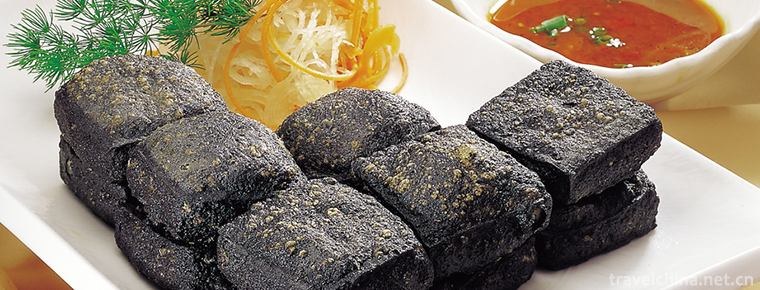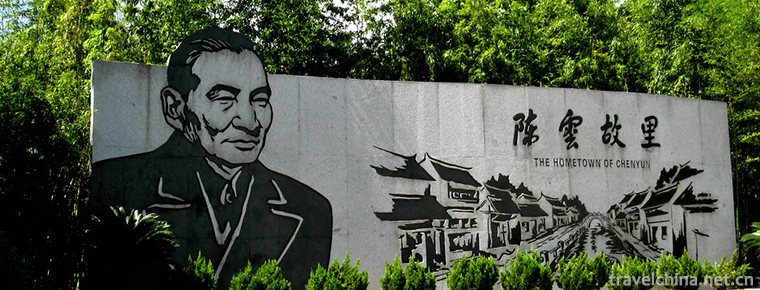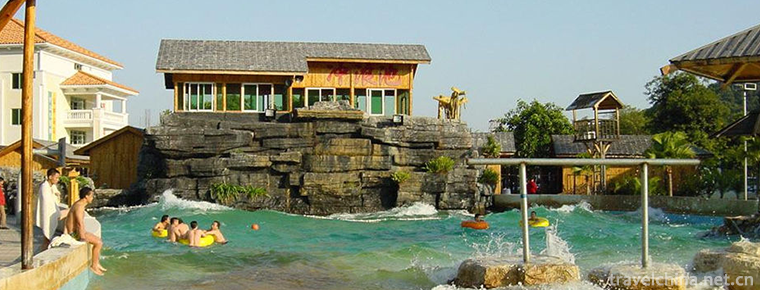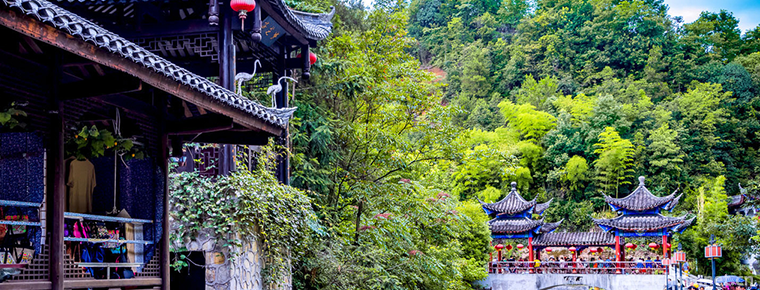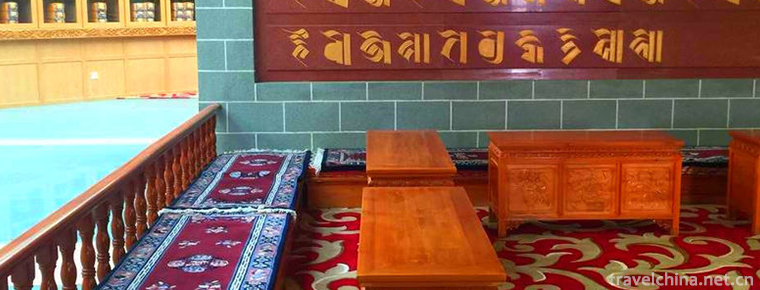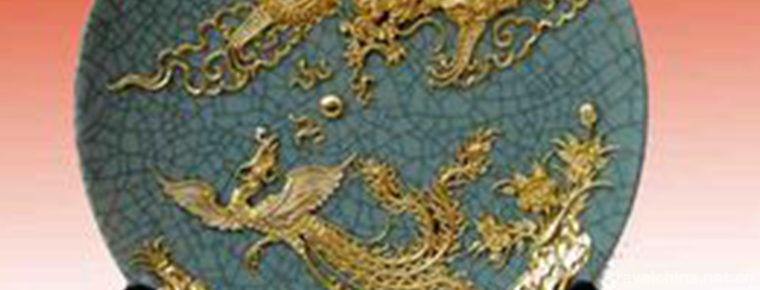Orthographic drama
Orthographic drama
Zhengzi Opera, a local traditional drama in Lufeng City, Guangdong Province, is one of the national intangible cultural heritage.
Zhengzi opera, originally known as Zhengyin opera, is singing in Zhongzhou Mandarin. It is an ancient and rare opera with many voices. In the early Ming Dynasty, one of the Southern Opera was introduced into eastern Guangdong, forming orthographic opera, which was mainly rooted in Hailufeng area and then spread to Hong Kong, Macao, Taiwan and Southeast Asia. There are more than 2600 traditional operas in Zhengzi opera, which can be divided into two categories: literary opera and martial arts opera. Their performance style is simple and grand.
On May 20, 2006, Zhengzi opera was approved by the State Council of the People's Republic of China and listed in the first batch of national intangible cultural heritage catalogues, numbered IV-15.
historical origin
Zhengzi opera was a branch of Nanxi opera in its early stage.
In the seventh year of Xuande in the Ming Dynasty (1432), there was a manuscript of the script Liu Xibi Jinchai, because the word "orthographic" was included in the line of the final title of this volume, "the end of the newly compiled full-phase north-south insertion of Zhongxiao orthographic character Liu Xibi Jinchai". "Liu Xibi Jinchai Ji" is a lost biography of Nanxi Opera. The logo of the gong and drum score is basically the same as that of the gong and drum scriptures of the orthographic opera. There are the performances of the ugly mother-in-law and the net supporting actors, and the performances of the orthographic opera also have such rules. Therefore, the source of the orthographic opera is related to Nanxi Opera.
During the Wanli period of the Ming Dynasty, Huang Shen wrote "Records of Tucheng in Shiqiaochang", which called Jieshiwei in Lufeng County "since the beginning of the country, songs and dances have been heard of each other".
After Jiajing, the stage was built in groups. During Wanli period, the stage was built in front of Yuanshan Temple in Qianshi Xuanwu Mountain to perform orthographic opera. In 1748, the stage was expanded to accommodate two troupes.
Yuanshan Temple has a theatre for entertainers to eat and sleep in. The wall of Xiku House bears the names of "Premier" of Xuanwu Mountain's mysterious operas from 1750 to 1961. It is said that the oldest orthographic opera troupe, Shuangxiban, lasted until 1960 after the founding of Qianlong in 42 years.
In the middle of the Qing Dynasty, orthographic operas were very active in Chaozhou. When Xianfeng rebuilt Marshal Tian's temple in 1860, the inscription "the orthographic band pays homage to the God with two yuan of silver per class every year" was inscribed on the inscription, and the number of silver donations was more than twice that of the Chaozhou band.
The existing 11-year Tongzhi (1872) Bei Shuyi handwritten "Jingchai Ji" performance book, marked with life, Dan, foreign, occupied, end, ugly, clean, husband, small, miscellaneous 10 performance lines.
During the reign of Guangxu and Xuantong, "Zhengyin Opera with ancient artistic and cultural value in Chaozhou... There are still Wanliban, Old Yongfeng, New Yongfeng, Old Three Winners and New Three Winners... Singing in and out of Chaozhou counties... When I was a child, I loved the old Sansheng, the new Yongfeng Ban's ring of fire, sword-jumping window and braid. The old three winners performed the story of the white bird, and their steps on the horse also won the lottery. In the middle of the night, various classes performed the tide sound in order to cater to the public. (Xiao Yaotian's Chaozhou Drama Chronicle)
In 1906, the ancestral temple of Xuanwu Mountain in Lufeng Jieshi was restored to Guangxu. In addition to the official theatre troupes often performed there, more than 10 theatre troupes of six kinds were gathered to celebrate. At this time, there were orthographic troupes traveling to Southeast Asia to perform.
At the end of the Qing Dynasty and the beginning of the Republic of China, the orthographic opera gradually withdrew from Chaozhou, and the outline opera was maintained in Haifeng and Lufeng counties. Zheng Nai-er, the son of Zheng Zheng, has left behind an outline of more than ten plays, all of which are "Three Kingdoms Opera" except one "Hung Men Banquet".
After the Republic of China, orthographic opera has not been as prosperous as the earlier period. Although it is called by the outline drama of Gong and drum and bow and horse martial arts, it attracts audiences by performing chaotic operas at midnight, but it can not maintain the grand occasion of that year.
In the fourteenth year of the Republic of China (1925), under the initiative of Peng Mei, the leader of the peasant movement in Hai, Lufeng and Dongjiang regions, the Pear Garden Trade Union was established jointly by the artists of Zhengzi Opera, Western Qin Opera and Baizi Opera. At one time, the management system of the old opera troupes was replaced by democratic management. Some artists also participated in the armed uprising of peasants in Hai and Lufeng.
In November of the 16th Republic of China, the Soviet Democratic Government of Haifeng County was established. After the struggle of orthographic opera and other opera artists, the Haifeng County Workers, Peasants and Soldiers Congress held on November 18 of the same year adopted the draft resolution on building a new revolutionary culture, which contains the content of "improved drama" including orthographic opera. But before the draft was implemented, the revolution suffered setbacks. Some artists were killed and some fled to other places.
In the thirty-second year of the Republic of China, there was a great famine, and many artists died of hunger. Some of them changed their careers. The orthographic opera was on the verge of extinction, leaving only four shabby classes.
After the founding of the People's Republic of China, with the support of the local people's government, Zhengzi Opera resumed its professional theatre troupe, carrying out the work of "changing the theatre, changing people and system", and recruiting actresses to change the situation of the whole male class in the past.
After 1953, under the leadership of the old artists, we excavated and sorted out the traditional plays. The performances of Bairi Yuan, Baihua Giving Swords, Gucheng Hui, Jinyeju, Zhangfei Home, Throwing Chai, White Rabbit, Bronze Banner, etc. not only kept the old and simple artistic characteristics, but also changed. The new development is very popular with the audience.
In the autumn of 1960, on the basis of two orthographic theatre troupes, Yongfeng and Shuangxi in Haifeng and Lufeng Counties, which were restored in the early days of the founding of New China, the orthographic theatre troupe in Shantou Special Area was merged. Through the cooperation of old artists Chen Baoshou, Cai Twelve and Liu Maqian with the new literary and artistic workers, the troupes of Six Langs, Wusong Killing Sister-in-law, and Traditional dramas such as Fang Shiyu Dazhao, Little Marriage Force and Zhang Chunlang's Hair Cut have also won good reviews from audiences.
During the Cultural Revolution, both troupes were disbanded.
In 1980, the orthographic theatre troupe of Lufeng County resumed its establishment, and arranged and performed such dramas as "Baimian Tiger of Baogong Trial", "Ancient City Club" and "Yujiale".
Cultural characteristics
Sound chamber
The performance style of orthographic opera is simple and magnificent, especially good at LianTaiben opera. Zhengzi opera has 12 lines, with Zhengyi opera and Kunqiang opera as the main vocal tones, divided into Wenxi opera and Wuxi opera.
The aria of literary opera is relatively old, mainly composed of orthodox tunes (big banqu) and singing signs (kunqu opera), mixed with random play and minor tunes. Orthophony is influenced by four tunes: Yiyang tune, Yuyao tune, Qingyang tune and Siping tune. It sings in harmony with the masses, whitening and rolling. Its tunes are divided into six major categories, six minor ones, five flexible ones and reverse lines, and there are rhythmic changes such as headboard, second board (middle board), third board (fast board) and lead sentences. Orthophonic music commonly used music cards are "mountain goat", "four dynasties yuan", "Zhuyunfei", "lock South branch" and so on. Kun Opera is called "Brand Opera" by artists. It has two kinds of structure: diverticular structure and single song structure. The divertimentary structure is based on the four sets of Southern and Northern Opera, namely "Xinshuiling" set, "Drunken Flower Yin" set, "Pin Butterfly" set and "Tin Lip" set. The singles are called "broken brand" or "single brand" by artists, such as "Shanpo Goat", "Erlang Shen" and "Drunken Dongfeng". In use, the combination is relatively free and flexible, especially in a play which is often composed of two or three characters singing a music card together.
Wushu opera is mainly composed of workmanship, especially fighting. There are no or few singing tunes. It can be divided into four categories: Dazhuan opera, Xiaozhuan opera, Bentou opera and Jinpu opera. The play is accompanied by playing cards to render the atmosphere, which is warm and hot. Its performances include flag trembling, muscle trembling, moustache trembling, horse running and southern martial arts display, which can well represent various historical and military scenes. Traditionally, there are 12 kinds of business: red face (clean), black face (clean), white face (clean), Laosheng, Wusheng, white fan, Zhengdan, Huadan, handsome, duke, mother-in-law and ugly. Black noodles can be divided into black paste and three-flower face, and black shirt, blue shirt (boudoir dan) and flower Dan posts and three-flower dan. Business is complete, divided into tools. In the performance, some trades also sketched faces, with more than 200 designs such as hairy surface, turtles, eagles, tigers and so on.
In orthographic operas, the orthographic tunes are best sung in Sangong and Shengdan. They have different styles. The former is very bold and vigorous in Yiyang's high-pitched voice. In singing, the protagonist's heroic spirit and heroic intense emotion are often shown in his frank, unrestrained and high-spirited singing. Orthophonic music, singing in the form of Sanbansan music, combined with the loud atmosphere of gongs and drums, makes the plot more strongly rendered. The singing feature of Yuyao tune is that it is composed of mixed white and melody similar to that of singing white. Its singing voice appears in a hurry and lively flowing-board style, which depicts the characters'psychology and paves the way for tense and exciting scenes.
The Kun Opera of orthographic opera can form different situations in different roles, different repertoires or different stages of the same repertoire because of the same piece of music in the same repertoire. Sheng Xing, Dan Xing and Jing He Ugly conform to the characteristics of the characters in singing. Each line's role singing shows its own style in timbre and intensity of singing, and also shows different characteristics in the use of tunes and arias in all walks of life. At the same time, in the processing and expression of pronunciation, timbre and true or false voice, and in the performance of singing skills and performing arts, we strive to make the characterization of characters more in-depth.
Qu card
Qupai is also called brand, and orthographic opera is the most distinctive and traditional one with orthographic music. According to Daguan Tanyilu of Zhengzi Opera, most of the Zhengyin Qupai cards have been lost, with only eight remaining cards: Xinshuiling, Shanpo Goat, Xiangliuniang, Yunfei Diao, Crying Plate Mountain Slope Goat, Locking South Branch, Not Road, and Ending. The Qupai of Kun Opera is limited by the style of ancient poetry, and changes are relatively small, such as Jintang Dao, Xiaotaohong, Zhuma Ying and Yujia Ao, which originated from Tang and Song poems. All kinds of music cards are categorized into various sets and lyrics according to the music metrics, styles and their modes and pitches, so as to achieve a unified musical style in the use, so as to make the music structure more rigorous and complete.
Representational repertoire
There are more than 2600 traditional operas in Zhengzi opera, which can be divided into two categories: literary opera and martial arts opera. Wenxi Opera includes the Zhengzi Liu Xibi Jinchai written in Xuande seven years of Ming Dynasty and the Southern Opera Copies of Cai Botao written in Jiajing Dynasty, a number of more complete copies of Qing Dynasty and Republic of China, as well as the records of 1950s. Four major joyful operas: Sanyuan Ji, Wugui Ji, ManBed Wat, Yuehua Yuan, four bitter operas: Jingchai Ji, Sunflower Ji, Pipa Ji, White Rabbit Ji and four major bow and circus: Zhongyilielie, Qianliju, Tiegongyuan and Ma Lingdao are collectively called twelve genuine operas. Wushu operas are mostly Liantai operas, such as "Three Kingdoms" and "Sui and Tang Dynasties".
Inheritance and Protection
Inheritance value
Zhengzi opera has a long history, simple style, strong Lingnan characteristics and rich heritage value. At the same time, Zhengzi opera is a variant of ancient Nan opera, which provides valuable materials for the study of the evolution of opera voice and the influence of local culture on opera.
Heritage figures
Peng Meiying, female, was born in October 1944. On February 15, 2008, Peng Meiying was selected as the representative successor of the second batch of national intangible cultural heritage projects, which was declared by Lufeng City, Guangdong Province. Project name: orthographic drama.
Huang Zhuangying, male, was born in 1962. On February 15, 2008, Huang Zhuangying was selected as the representative successor of the second batch of national intangible cultural heritage projects, which was declared by Lufeng City, Guangdong Province. Project name: orthographic drama.
protective measures
In 1978, ancient costume opera was resumed throughout China. Lufeng City opened a training course on traditional opera with 25 trainees. Peng Meiying, the representative successor of the national intangible cultural heritage project, was the main teacher of the class, focusing on training the successors of orthographic opera. Under her painstaking cultivation, Wu Guoliang, Huang Zhuangying and other orthographic opera successors emerged. In 2008, the troupe opened its doors to recruit 34 students, who were selected to study basic skills in Guangdong Opera Art School and Jieyang Art School. In 2012, 15 students were recruited to study in Jieyang Art School. All of them were young actors after 1990 and after 00. The orthographic opera began to spit out new emeralds.
social influence
Important activities
From September 24 to 28, 2012, the fourth Chaozhou Opera Festival, a rare national opera and the first batch of national intangible cultural heritage, was held in Shantou.
On April 30 and May 1, 2018, for two consecutive nights, the first batch of national intangible cultural heritage - orthographic drama "Mazu" appeared on the stage of "Mazu University Hall" on Meizhou Island, Putian City, Fujian Province.
Honorary recognition
In 1973, Peng Meiying, the representative successor of the national intangible cultural heritage project, starred in the orthographic drama "Song of the Longjiang River", which was received and highly praised by Chen Yu, then governor of Guangdong Province.
In June 2007, the Ministry of Culture and Tourism of the People's Republic of China designated orthographic opera as the only representative of Guangdong Province to attend the rare opera exhibition of China's intangible cultural heritage.

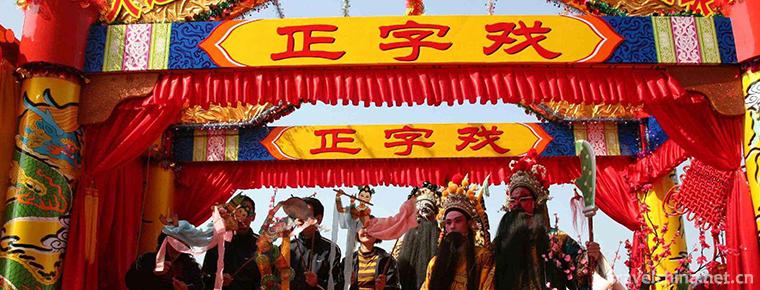
-
Yin and yang
There are three characteristics of yin yang philosophy: unity, opposition and interaction. In thinking, it is an inseparable node of arithmetic and divination..
Views: 367 Time 2018-11-13 -
Huizhou stinky tofu
The common name of stinky tofu in Huizhou is "Big Dumb and stinky", which is a characteristic traditional snack in Huizhou, Anhui Province..
Views: 188 Time 2018-11-27 -
Chaoyanggou tourist attraction
Chaoyanggou Scenic Spot in Hebei Province is one of the 30 most beautiful scenic spots in China, including AAAA-level scenic spots, National Geological Forest Park, National Rural Tour Demonstration S.
Views: 107 Time 2019-01-05 -
Chen Yuns former residence and Qingpu Revolutionary History Memorial Hall
Chen Yun's former residence and the Qingpu Revolutionary History Memorial Hall are the only Memorial Hall in the country that systematically demonstrates Chen Yun's life achievements approved by the C.
Views: 125 Time 2019-01-05 -
Huizhou Seaside Hot Spring Resort
Huizhou Coastal Hot Spring is a large-scale comprehensive resort built according to the national standard of "AAAAAA" scenic spots and five-star hotels. It integrates tourism and vacation.
Views: 206 Time 2019-01-19 -
Shantou Fangte Happy World Blue Mercury Theme Park
Shantou Fangte Happy World Blue Mercury Theme Park is the first participatory high-tech theme park in eastern Guangdong with science fiction as its theme, integrating entertainment,.
Views: 208 Time 2019-02-08 -
Tangya Tusi City Site
Tangya Tusi Town Site is located in Tangya Town, Xianfeng County, Enshi Tujia and Miao Autonomous Prefecture, Hubei Province, with its back to Xuanwu Mountain and facing Tangya River..
Views: 153 Time 2019-02-13 -
Tibetan Medicine
Tibetan medicine is a bright pearl in the treasure house of Chinese medicine. The Tibetan people living in the snow-covered plateau for generations have accumulated .
Views: 132 Time 2019-04-05 -
Xiamen lacquer line carving skills
Xiamen lacquer line carving technique is to use old brick powder, large paint and cooked tung oil as raw materials to mix, repeatedly beat into soft and resilient clay (commonly known as "lacquer.
Views: 84 Time 2019-06-12 -
Needlework of Chinese embroidery
Category: random needling, straight needling, disc needling, trowel needling, grabbing needling, flat needling, scattered wrong needling, weaving embroidery, applying needling, auxiliary needling, variant embroidery .
Views: 123 Time 2020-12-12 -
Neijiang medical and health
By the end of 2019, there are 3303 medical and health institutions in Neijiang, including 76 hospitals (56 private hospitals) and 3200 primary medical and health institutions. There are 25900 beds in medical and health institutions and 21100 health technical personnel, .
Views: 328 Time 2020-12-16


